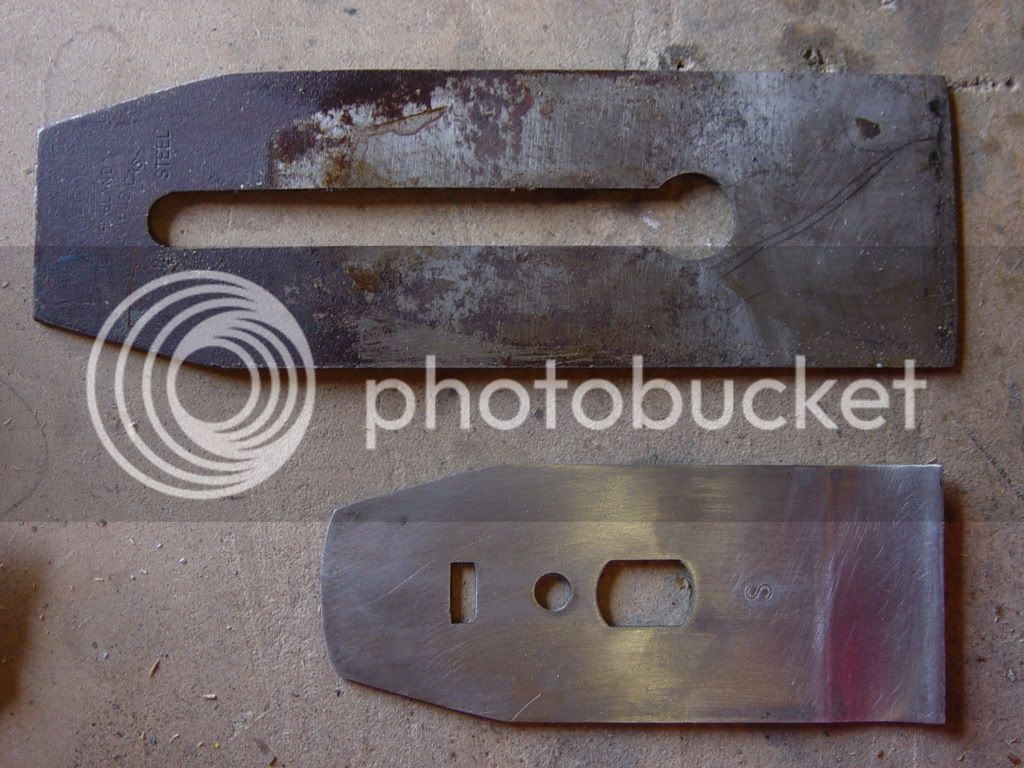MrJay
Established Member
You'll need to flatten the back first. Gotta be done. Sorry 'bout that.
The trick to the bevel is to grind it at roughly 25 degrees and then add a tiny micro-bevel at 30 degrees which forms the actual cutting edge with the back. To keep the blade honed you just touch up the micro-bevel, then clean the burr from the back; because the micro-bevel is a tiny wafer of a thing it is quick and easy to do. The 25 degree big bevel you could attempt with the wheel. Be wary of overheating the blade though; screw up the temper and the blade is fit for the bin. If you're looking for smoothing performance I'd be minded to make some kind of jig so you get a nice even, consistent bevel. Stock tool rests are notoriously not very tool resty.
(you don't want to do the micro bevel with the wheel oh no, that will go terribly wrong; - I didn't make that overly clear - Digit will in a minute though; oh wait!)
The trick to the bevel is to grind it at roughly 25 degrees and then add a tiny micro-bevel at 30 degrees which forms the actual cutting edge with the back. To keep the blade honed you just touch up the micro-bevel, then clean the burr from the back; because the micro-bevel is a tiny wafer of a thing it is quick and easy to do. The 25 degree big bevel you could attempt with the wheel. Be wary of overheating the blade though; screw up the temper and the blade is fit for the bin. If you're looking for smoothing performance I'd be minded to make some kind of jig so you get a nice even, consistent bevel. Stock tool rests are notoriously not very tool resty.
(you don't want to do the micro bevel with the wheel oh no, that will go terribly wrong; - I didn't make that overly clear - Digit will in a minute though; oh wait!)































